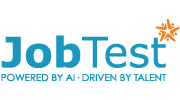A recent research showed that 63% of Millenials (1980-1996), who play a key role and account for 26% of Vietnam Labor at the present, have plan to find a new job opportunity. The Vietnamese Millenials' have an average of 2-3 years length working for a company. This trend causes a lot of problems to the business of enterprises and organizations such as shortage of managerial levels, skilled people, urgent vacancies, low training activities investment, and etc.
While the employers are struggling to find proper solutions to solve their workforce uncertainty and shortage, HR gurus and policy makers had intitials that strengthens the cooperation between the educational and training institutions, recruitment firms and employers. This three-party cooperation aims to make sure of qualified workforce supply and control. On the theory, the problems seems to be solved easily; however, it is a fact that the relationship between recruitment firms, training and educational institutions, and employers is so complicated regarding with the resposibility, benefits, and especially, TRUST and CREDIBILITY.
Taking action before the problem becomes more serious, the employers have to decide their own workforce strategy: BUILD, BUY OR BORROW? Each strategy has its own advantages and disadvantages. However, BUILDING FROM INTERNAL is the employers' top priority because it secures the talent pool for the organizational sustainability and growth.
BUILDING FROM INTERNAL can help the businesses to RETAIN TALENT SINCE DAY ONE OF HIRE. To achieve it, the employers should build an integrated system of talent management and development in alignment with the organizational capability analysis. So, How does this system look like? The system should have a process for ASSESSMENT -> TRAINING -> DEVELOPMENT in alignment with RIGHT TALENT AND CULTURE FIT.
The first and very important step is ASSESSMENT. How do the employers define and select their existing employees for development programs? Employees' work performance based on KPIs is popularly used so far and it helps to answer the question on WHAT. However, the employee's work performance alone is not efficient to ensure that these employees produce stable work performance because of their job competencies that is HOW-the ways that the employees use to produce the work performance. What type of employee is selected for high potential programs (HiPO) or Talent Pool? The best practice solution is assessing them on both their work performance and personal competencies.
Next step will be TRAINING activities. After having GAP such as individual skill gap, team skill gap, organizational capability gap, etc, the employers can apply diferrent training activities such as class-room, e-learning, On-the-job training (OJT) programs. OJT is one of the best one among three training methods because it helps the employers to save millions usd and build a strong Subject Matter Experts (SMEs) internally, which improves knowledge management better, too. Competency-based training should be studied and applied for better ROI. Post-training should be done properly to evaluate the effectiveness of traing programs.
The final step is DEVELOPMENT. What criteria should be considered as a successful talent development program? Even though right HiPO is selected and trained well, it will be absolutely wasteful if there is no career pathing for them. The system of talent development and organizational capability analysis is run effectively when Succession Planning is coming right after training stage. Succession Planning should monitor and track the HiPO progression by a software to make sure of the accuracy and update whenever the employers need fill in an urgent vacancy to sustain their business goals.
Human Capital is the most valuable asset of an enterprise and to have this resource, an RIGHT TALENT.CULTURE FIT system of talent development and organizational capability analysis from ASSESSMENT, TRAINING TO DEVELOPMENT should be applied by the employers rather than passively waiting for outside support.
Author: Nguyen Cong Thuy
SIGN UP and TEST now.





![[Jobtest Recap] Khóa Đào Tạo Disc Leadership Training Dành Cho Công ty TNHH Techtronics Industries Việt Nam Manufacturing khoa-dao-tao-disc-leadership-cong-ty-tnhh-tti-1](https://jobtest.vn/hrblog/wp-content/uploads/2023/05/khoa-dao-tao-disc-leadership-cong-ty-tnhh-tti-1-218x150.jpg)

